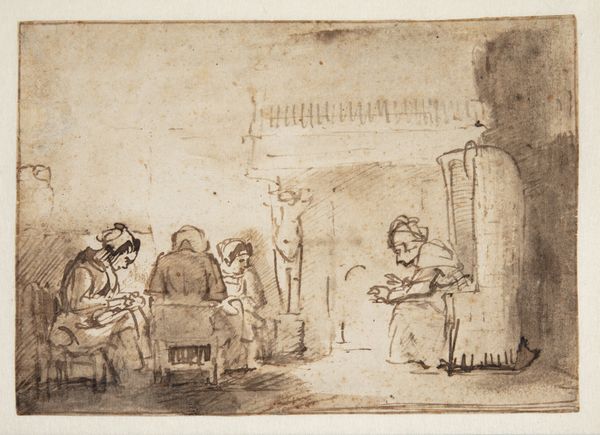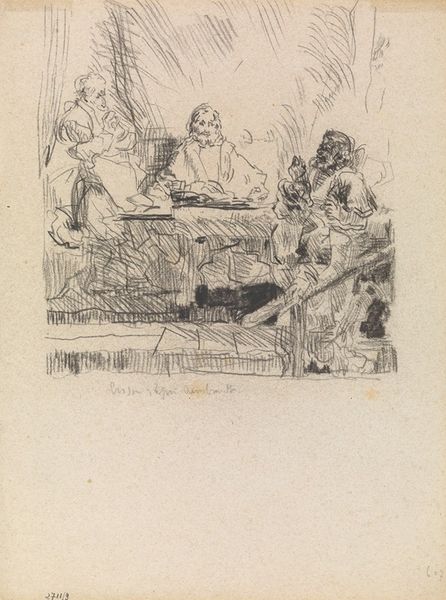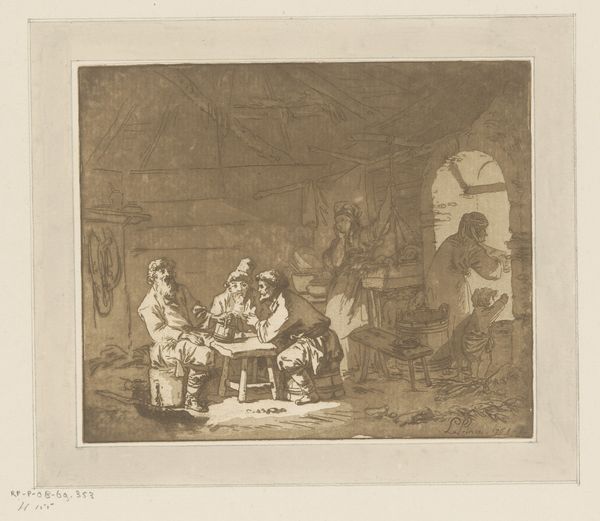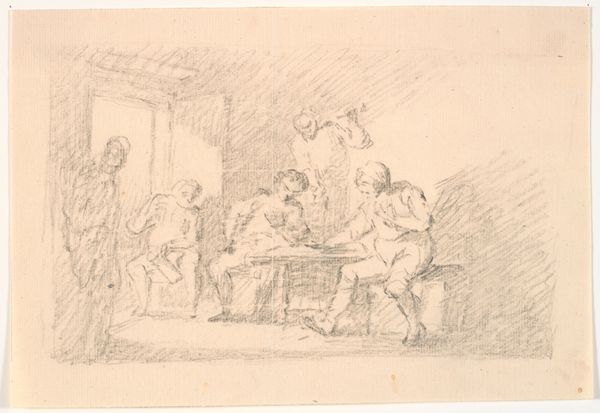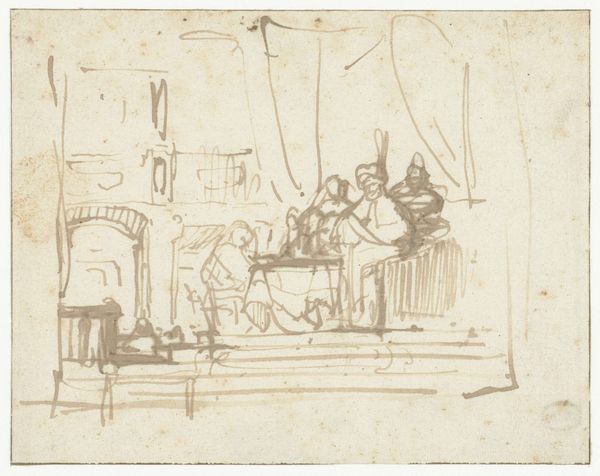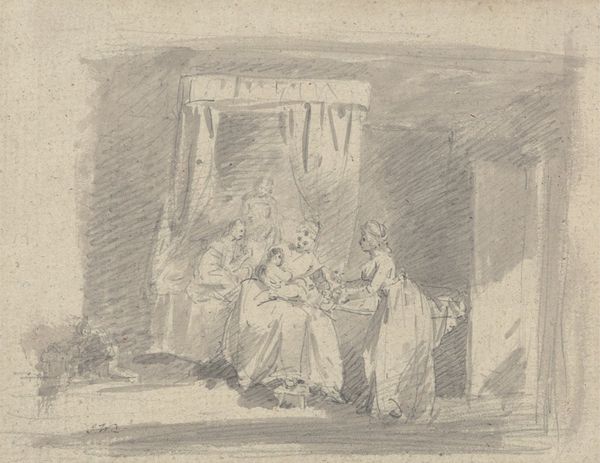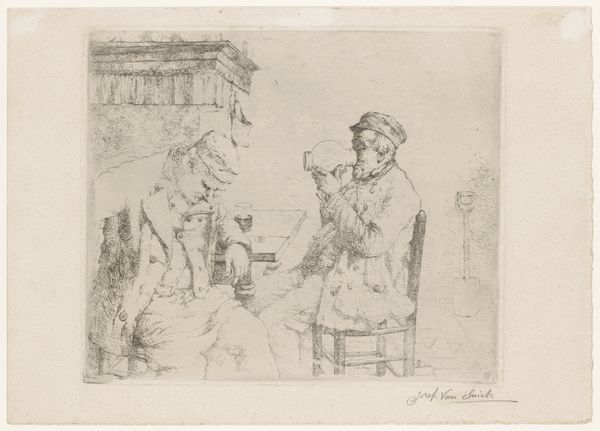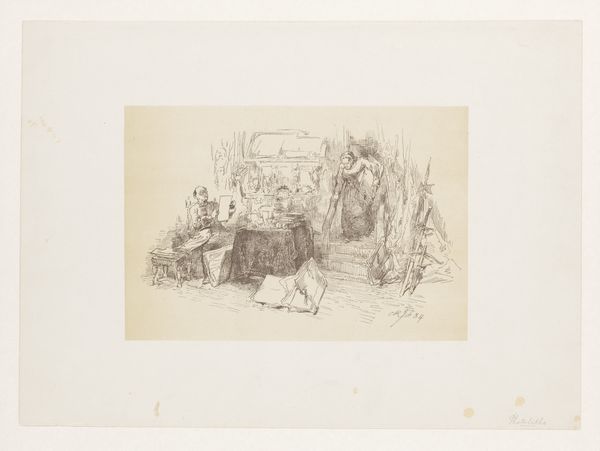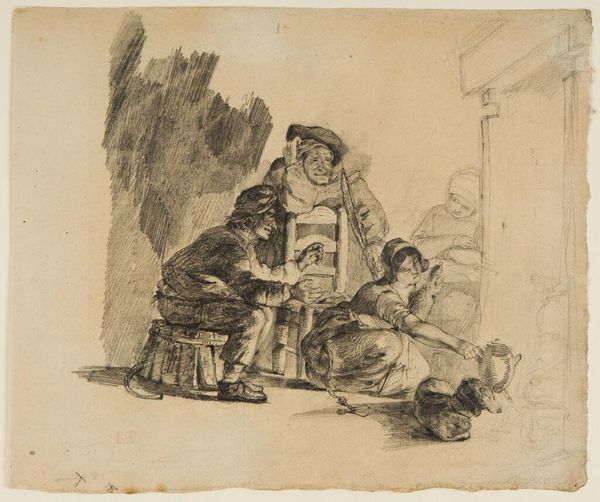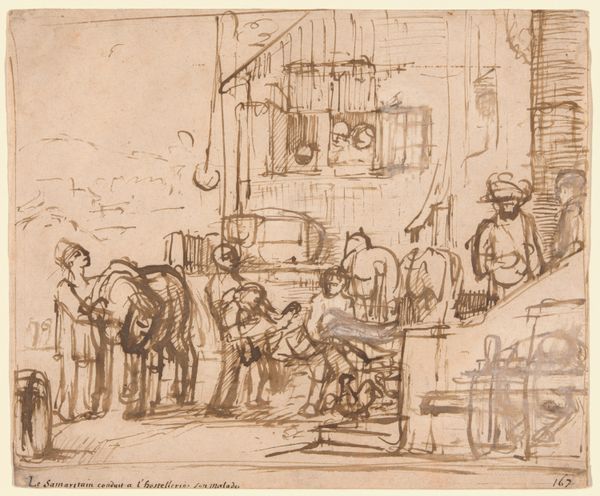
drawing, ink, pen
#
drawing
#
narrative-art
#
baroque
#
pen sketch
#
figuration
#
ink
#
pen
#
history-painting
Dimensions: height 185 mm, width 258 mm
Copyright: Rijks Museum: Open Domain
Curator: Standing before us is a pen and ink drawing by Samuel van Hoogstraten, dating from around 1658 to 1663, entitled "Jupiter en Mercurius bij Philemon en Baucis". It currently resides here at the Rijksmuseum. Editor: My initial reaction is one of understated drama. Despite the relatively small scale and monochromatic palette, the scene pulsates with an almost palpable tension. Curator: Hoogstraten masterfully employs a Baroque sensibility in the composition. Note the dramatic chiaroscuro and dynamic lines. The loose hatching suggests a fleeting moment, as if capturing a stage tableau. Semiotically, the table acts as a focal point. Editor: The story itself, drawn from Ovid’s Metamorphoses, speaks volumes about hospitality and divine judgment. Philemon and Baucis, an elderly couple, unknowingly welcome disguised gods into their humble home. The socio-political message underscores the importance of charity to the vulnerable. Curator: Certainly. The structure reinforces this reading. Observe how the architecture tilts away from the figures, directing your eyes to them, emphasizing their placement within the setting. Even their rendering uses linear perspective to convey recession and depth. Editor: And consider the figures at the table - their unexpected guests are attended with devoted attention and generosity. The kneeling figures in the left foreground seem caught between obeisance and questioning the circumstances. How might this story resonate, given Hoogstraten’s own experiences of political or social precarity? Curator: Perhaps, but I hesitate to speculate too much on biography when analyzing visual structure. The architectural setting could also act as symbolic commentary on the themes, its incompleteness speaking to human frailty. Editor: Right, yet that “frailty” invites deeper reflection on societal values during the Dutch Golden Age. Were displays of piety and charity accessible to everyone, or limited to certain classes and groups? How might people in Hoogstraten's era have related to the tale of the disguised Gods and social mores about caring for all? Curator: That is quite something to contemplate, and provides insight for an evolving audience who engages with art and culture today. Editor: Absolutely. It helps us interpret the work not merely as an isolated historical artifact, but as a living artifact.
Comments
No comments
Be the first to comment and join the conversation on the ultimate creative platform.
